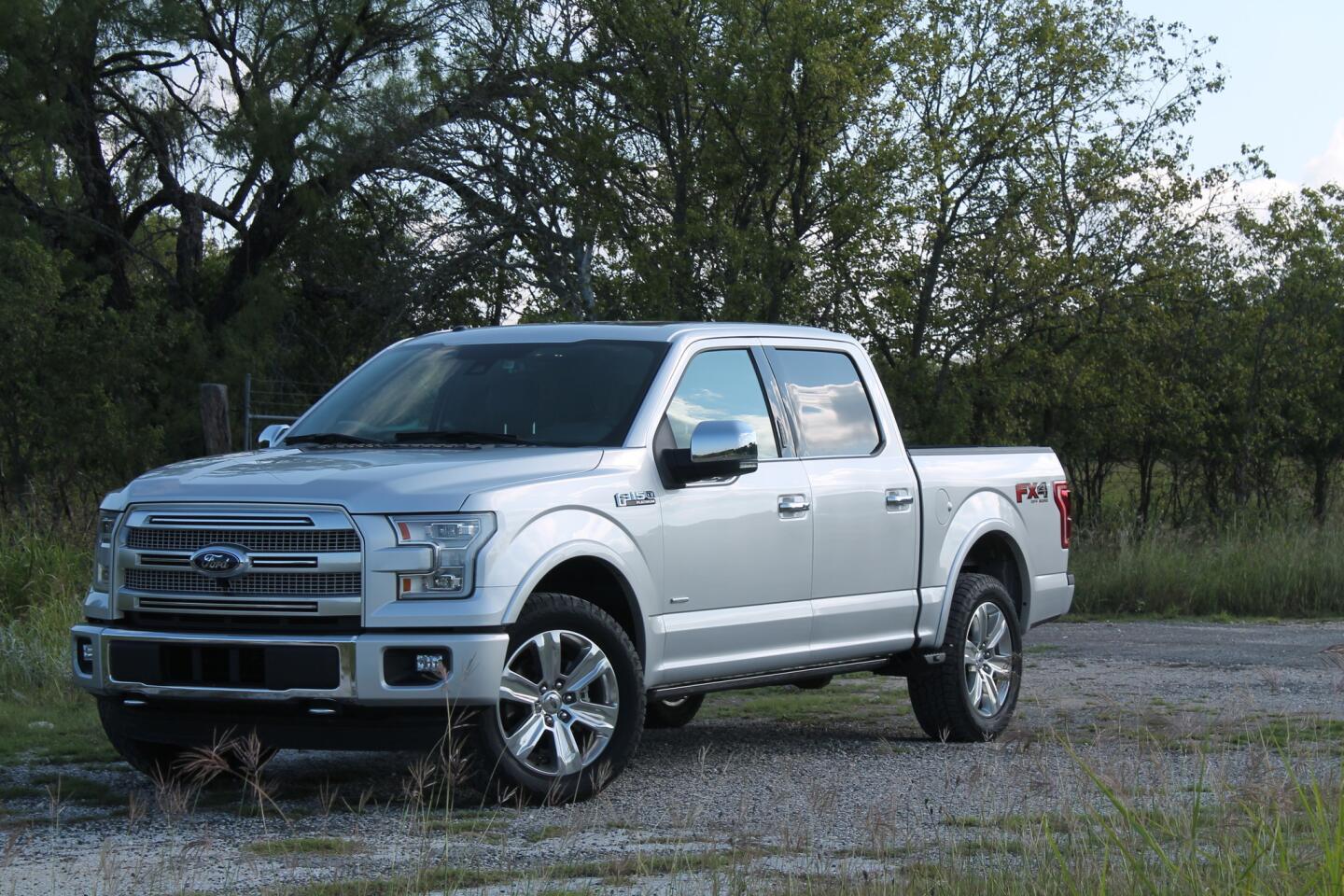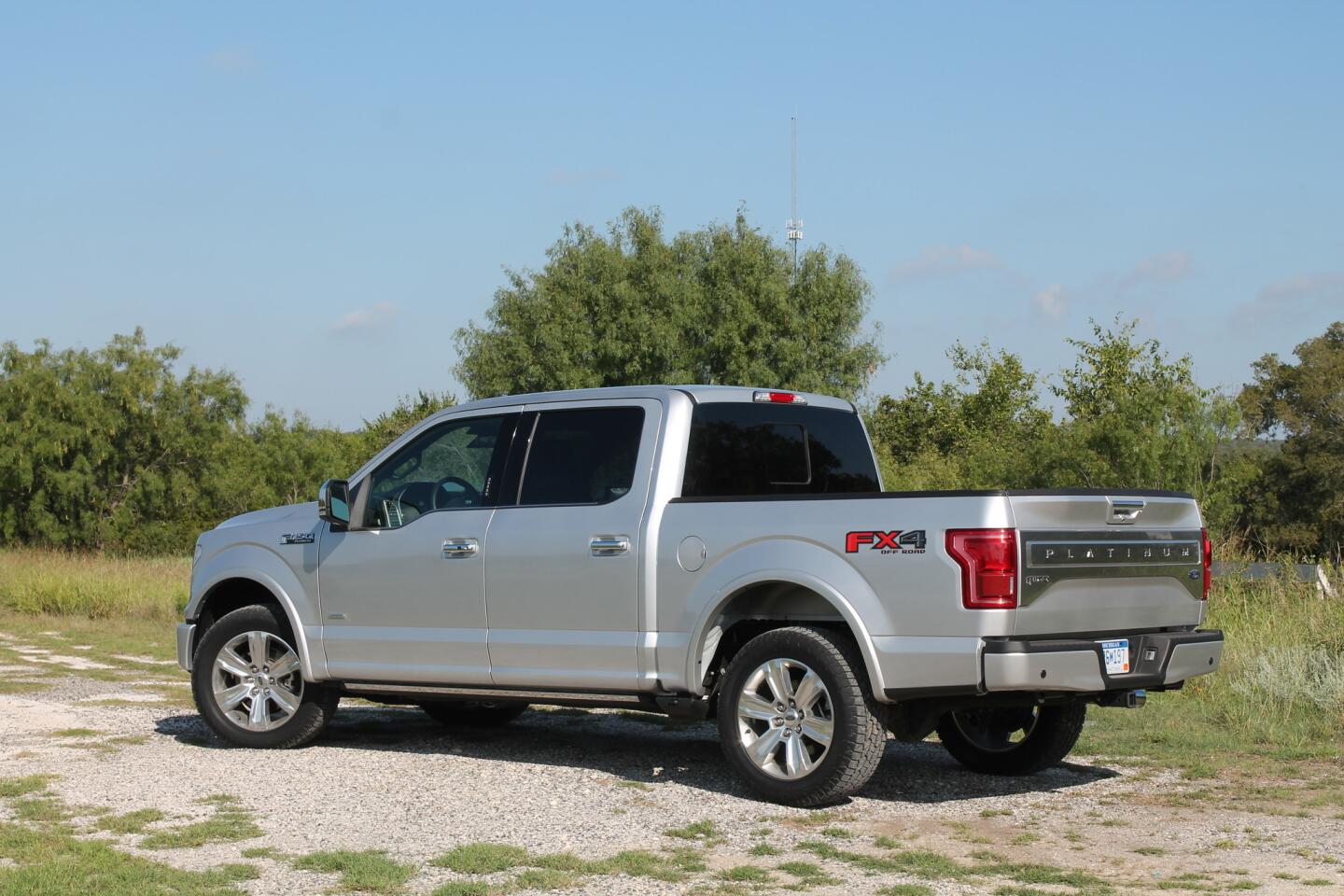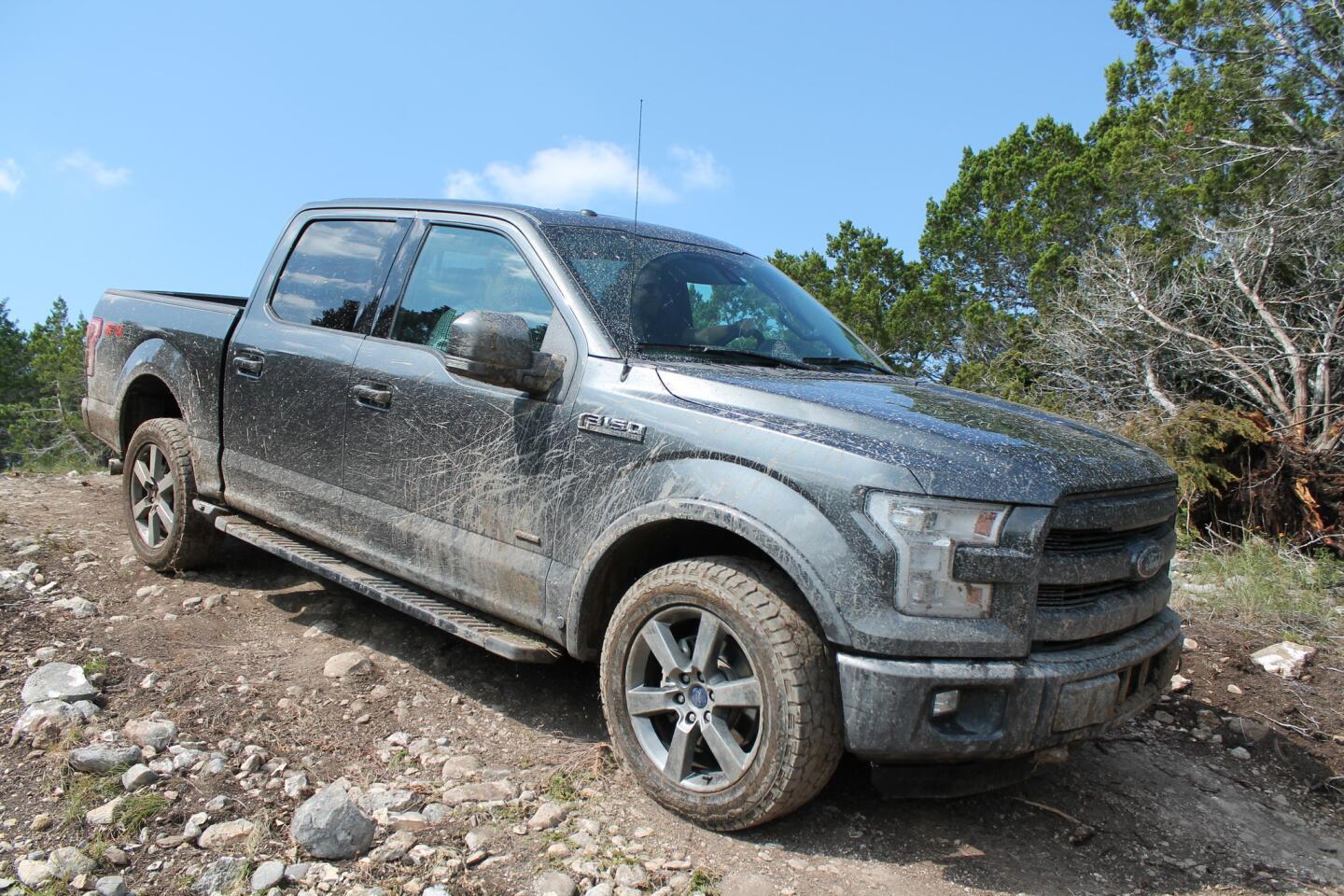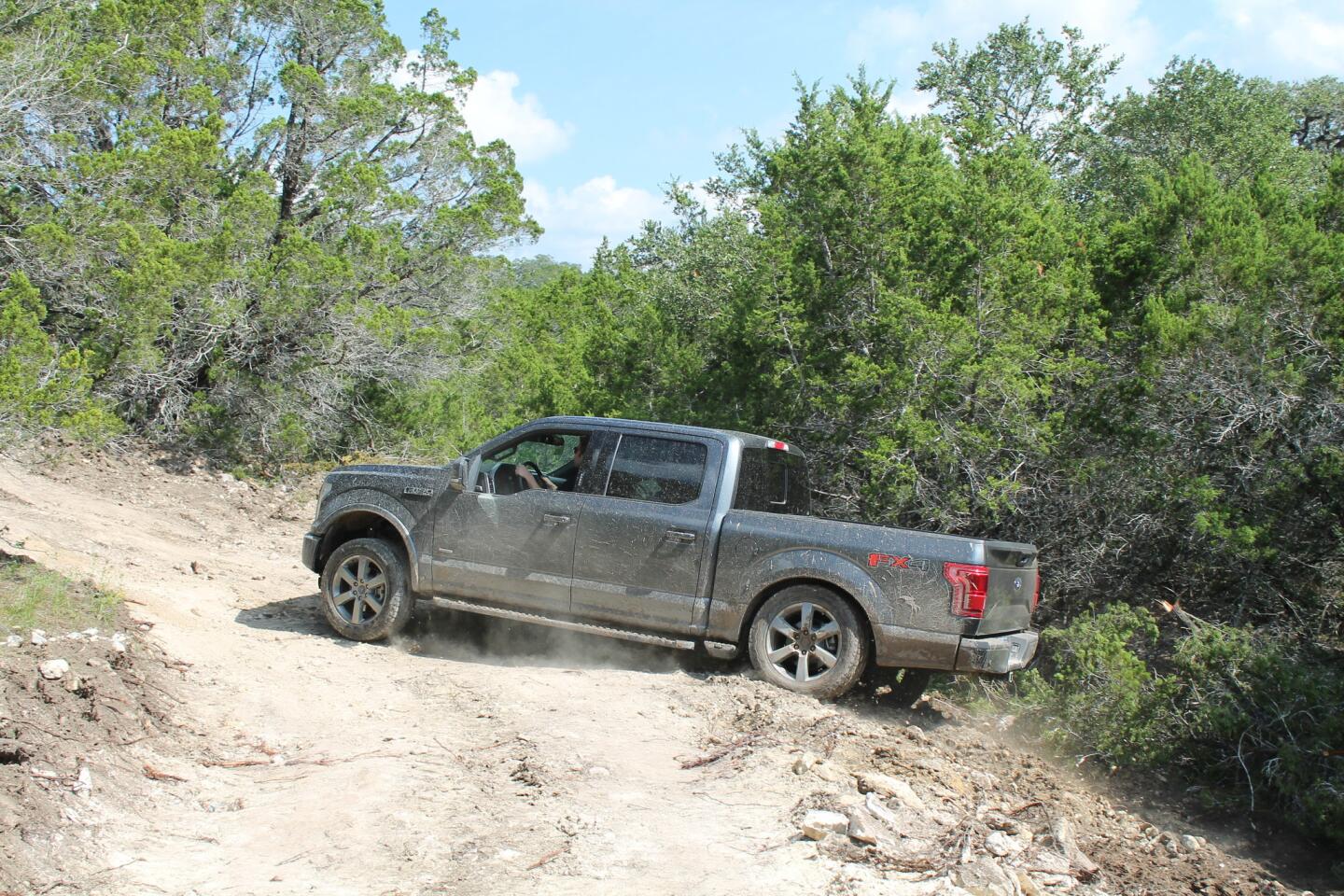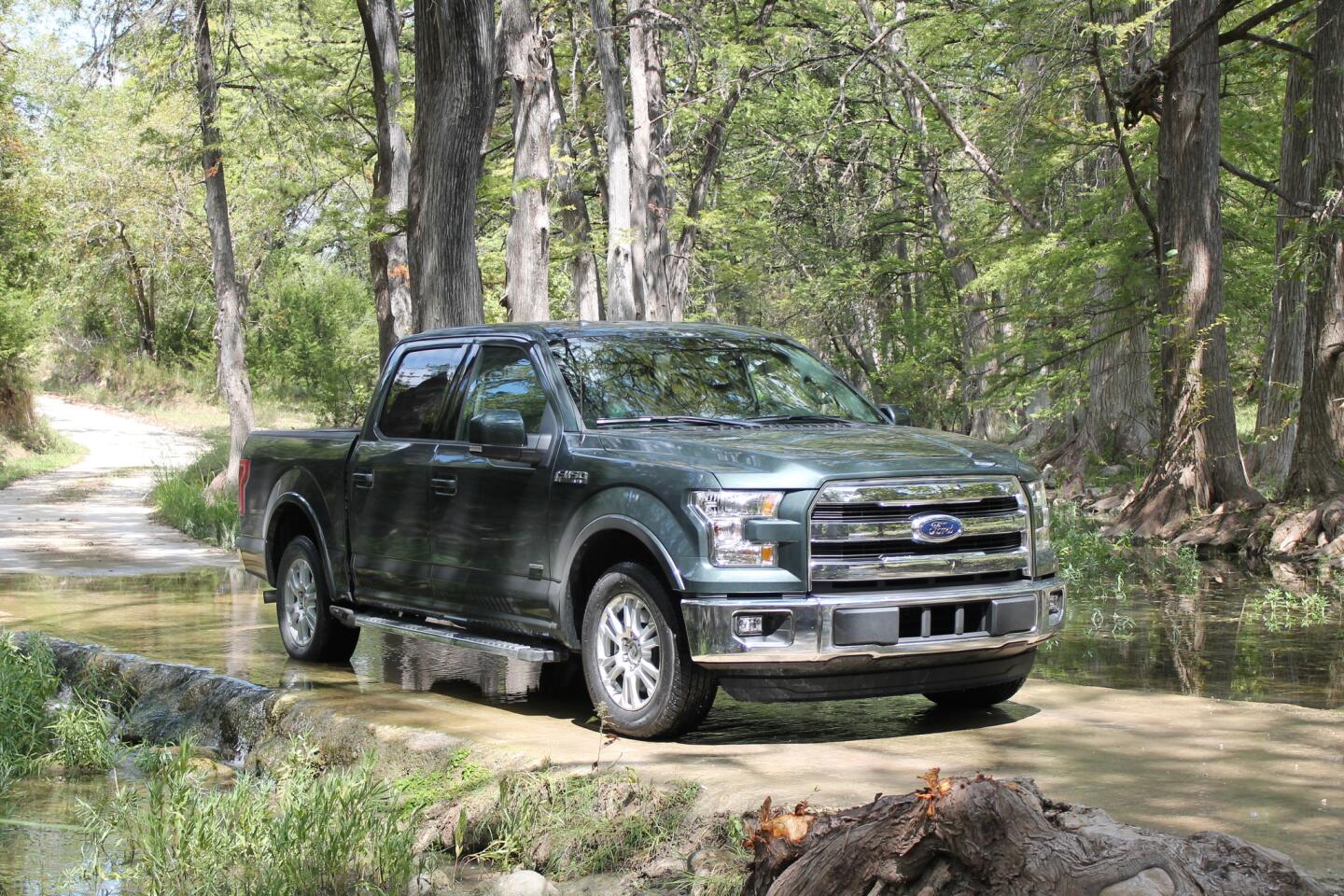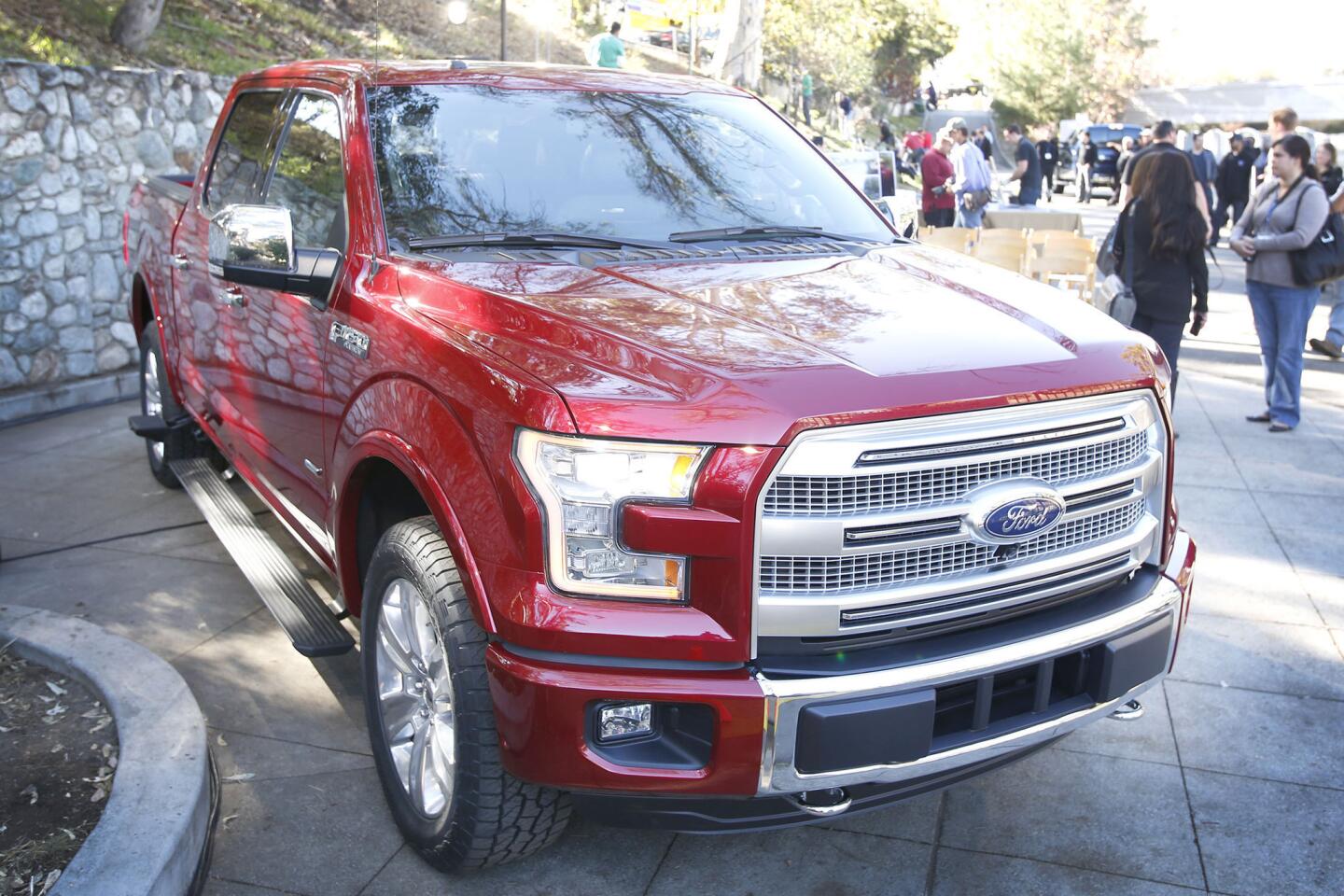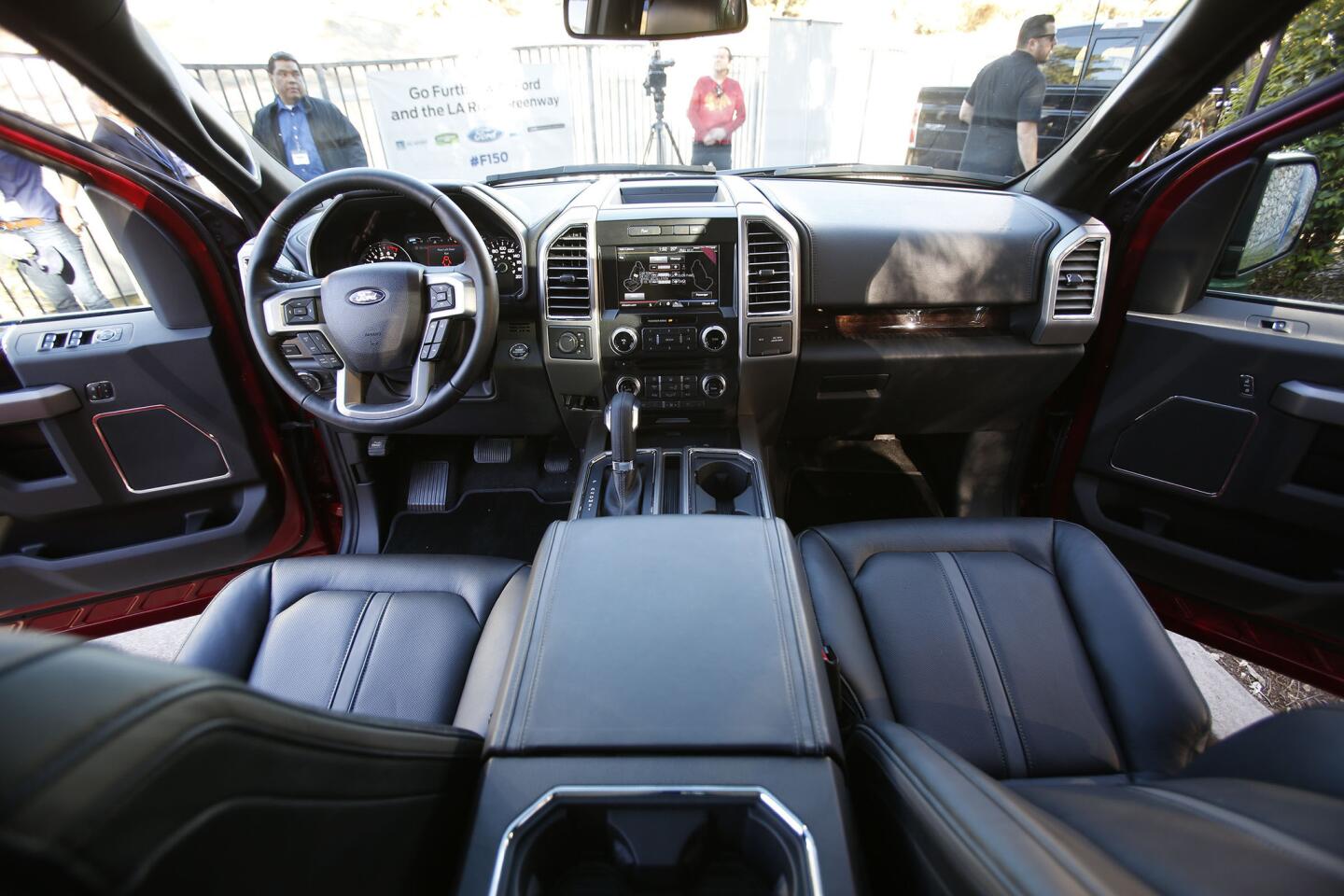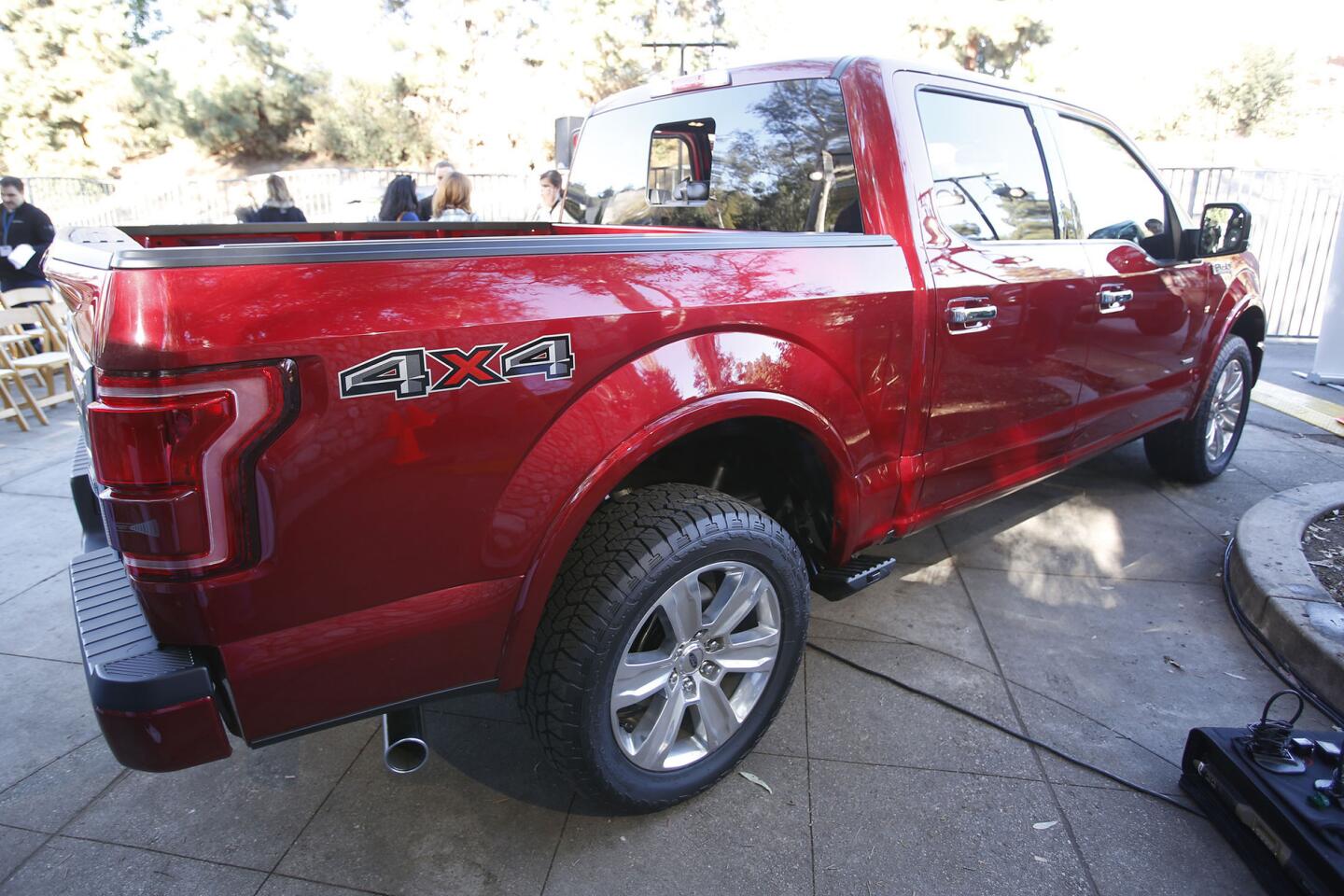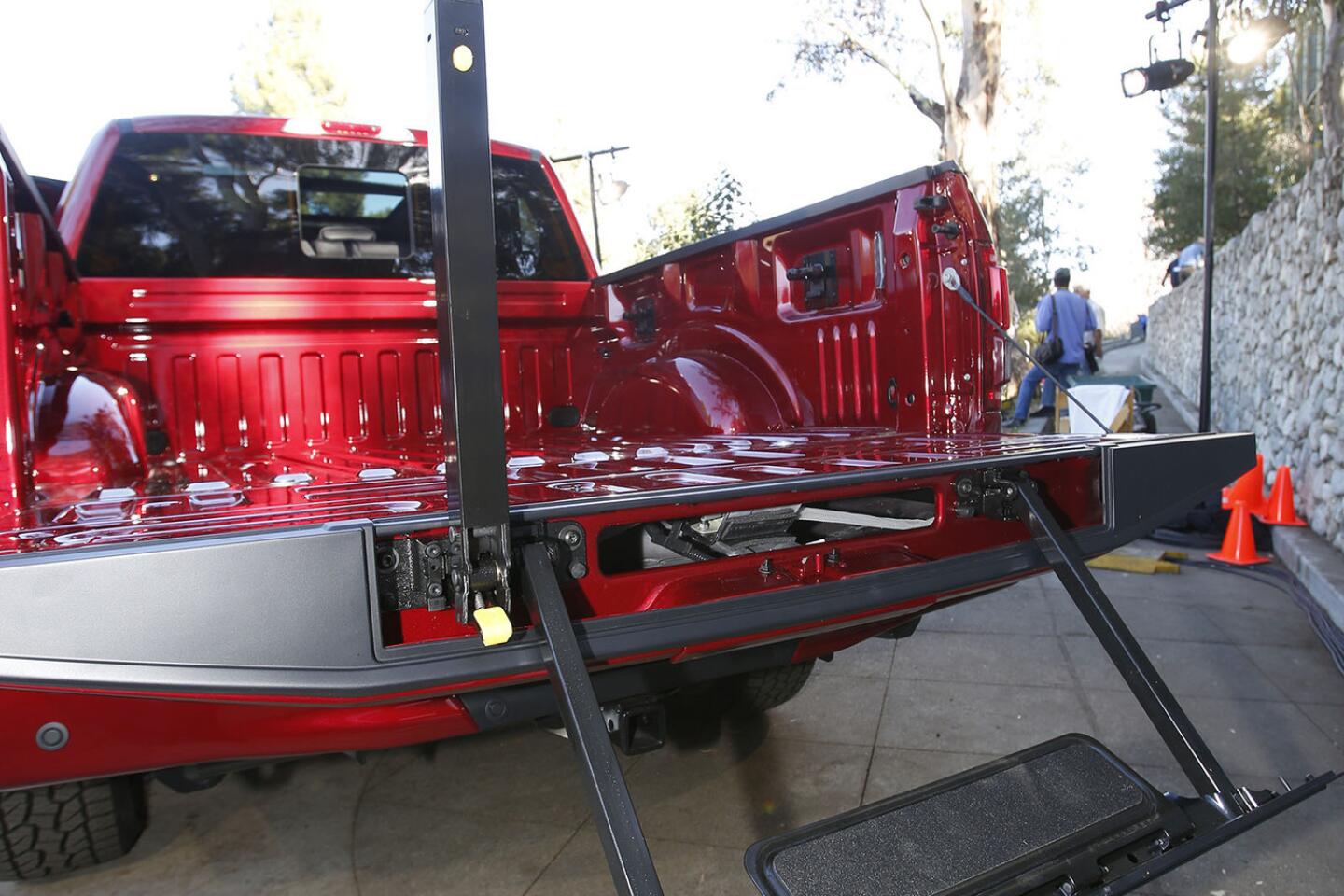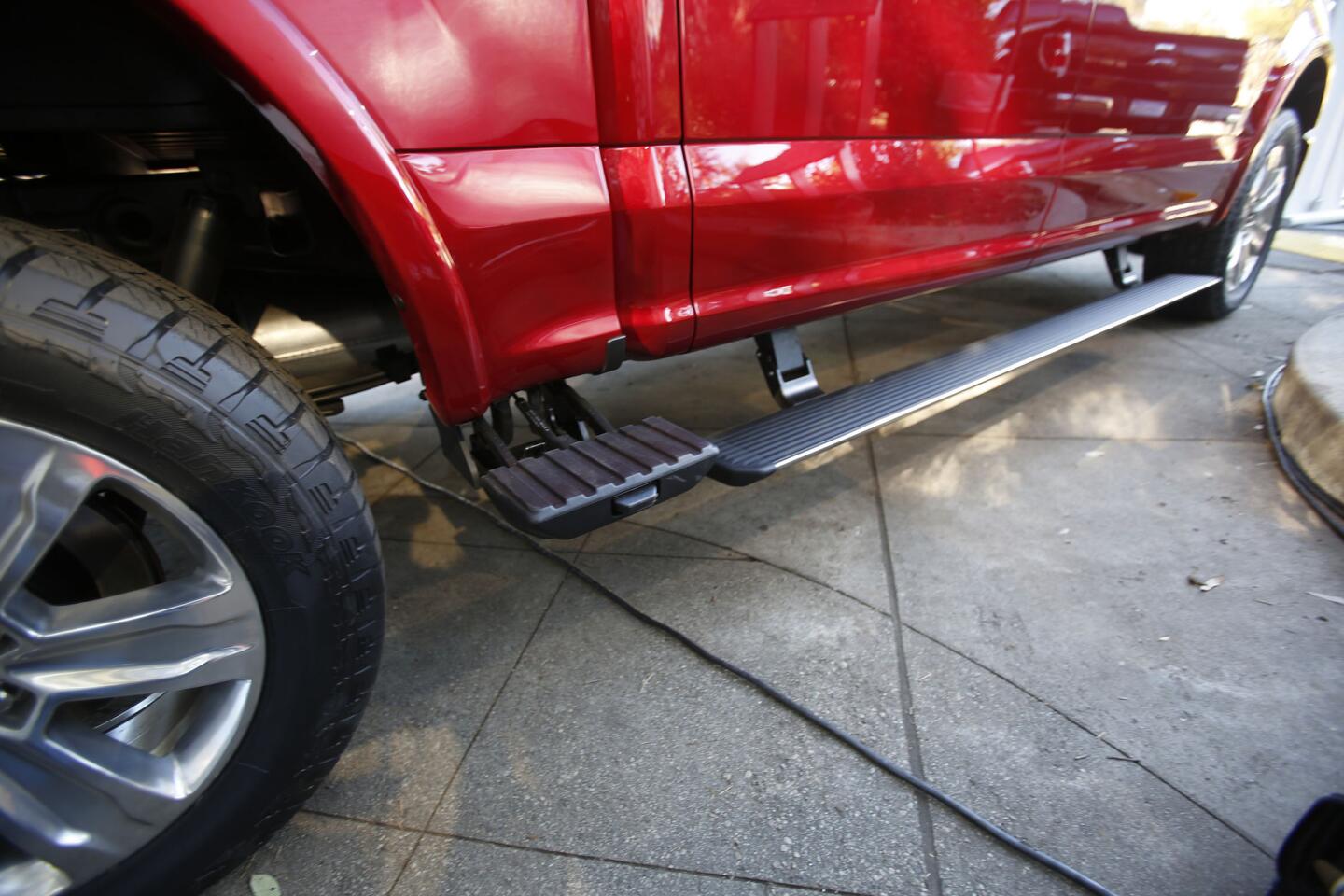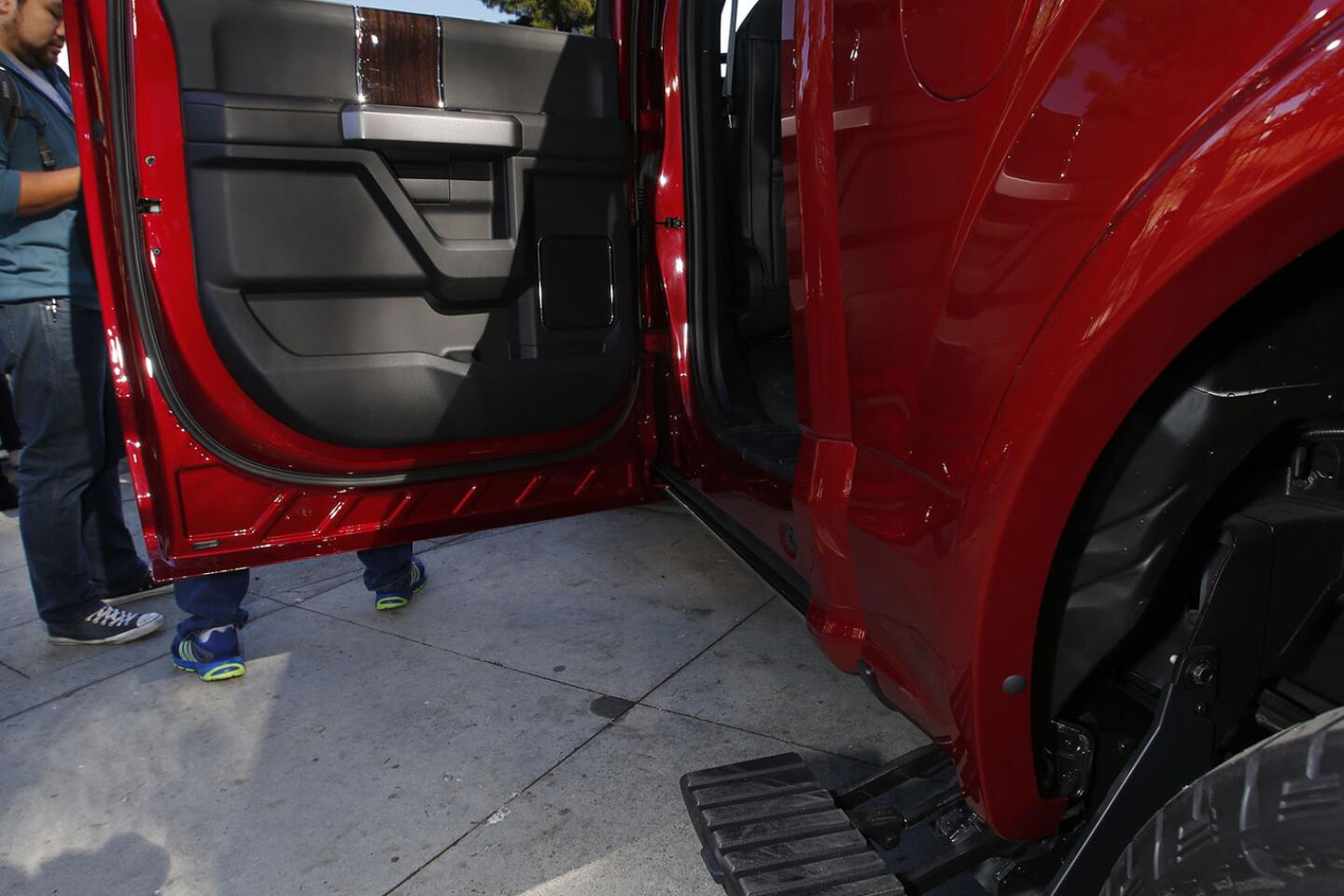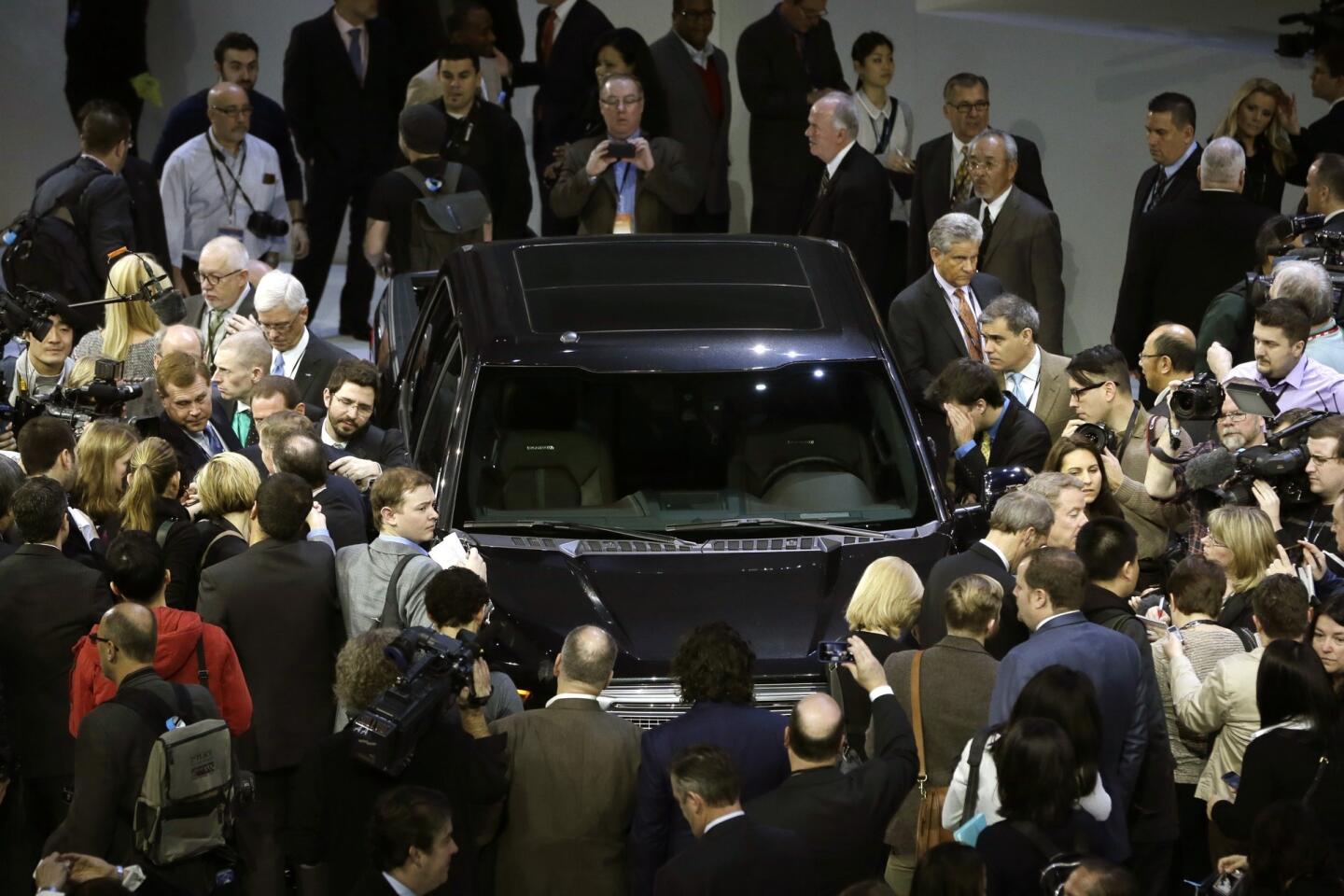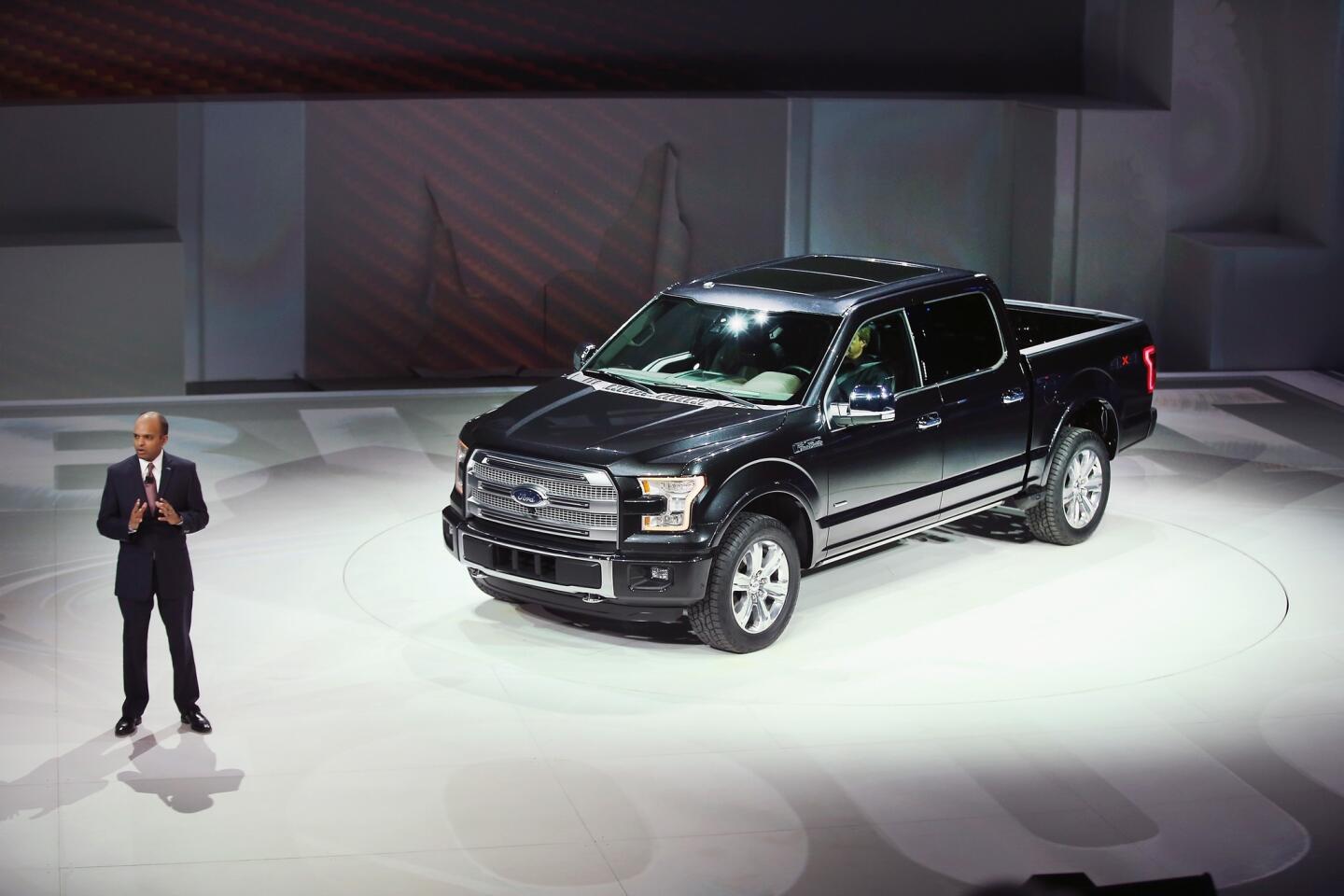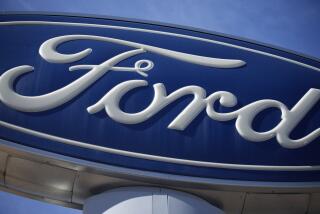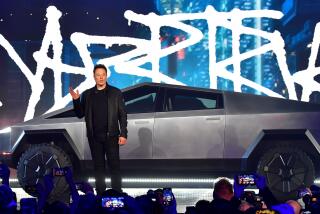Detroit Auto Show: Ford bets big on aluminum with F-150 truck
- Share via
While designing the next-generation F-150 truck, Ford Motor Co. secretly substituted the steel body on some of its current pickups with an aluminum shell and delivered them to business customers.
The automaker was looking to test how lightweight aluminum alloys would hold up on the job, at a gold mine, an energy utility and a construction firm. So it lent out the trucks in a test program — without telling the companies what was being tested. What Ford learned from 300,000 total miles convinced the world’s biggest seller of full-size pickups to make wholesale changes to the F-Series.
[Updated 9:49 a.m. Jan. 13: The 2015 model truck debuted Monday at the Detroit Auto Show, weighing 700 pounds less than the old one. After its introduction on the floor of the Joe Louis Arena, Ford Chief Operating Officer Mark Fields acknowledged that working with aluminum was more expensive than steel.
REAL-TIME updates from Detroit Auto Show
“But given the volume we are working with,” Fields said, “we will find some efficiencies.”
He said the new truck builds on the experience Ford has had working with aluminum in smaller amounts in other models “for a number of years.”
“We are taking it up a step into the mass production of our most important vehicle,” Fields said.]
Aluminum alloys will make up the engine compartment and almost every visible metal part of the new truck — the doors, the hood, the side panels, the truck bed, the tail gate.
Being the first major truck to embrace lightweight materials represents a big gamble for Ford, said Brian Johnson, an analyst with Barclays Capital, who estimates Ford earns about $11,000 on a pickup truck sale compared with $5,000 for a car. The F-Series trucks account for nearly half of Ford’s North American profits, he said, and the company can’t afford a misfire.
“It is the single most important product from Ford,” said Johnson.
PHOTOS: Highlights from the 2014 Detroit Auto Show
With its secret test, Ford kept customers in the dark about the aluminum so they would use the trucks just as they would any steel-bodied pickup, said Pete Reyes, the chief engineer for the F-150.
Ford eventually took some of the trucks back and tore them apart, looking to see how they withstood the rigors of the rugged worksites. It then made some changes, such as making the inner surface of the tailgate thicker for extra protection. The companies will now learn that they were aluminum, Reyes said.
Ford introduced the first F-Series truck, the F-1, in 1948. It was one of the first commercial vehicles produced following World War II. Chevrolet was the biggest seller of pickups at the time. But Ford believed a vehicle with a bigger, more comfortable cab could be used for small businesses and farm work, but also double as an every day driver.
DETROIT AUTO SHOW: Big trucks, fast cars and more
The formula worked. The F-Series became the nation’s best-selling truck in 1977. It became the best selling vehicle of any type in 1982 and has retained the title since. Ford has sold 33 million F-Series trucks since 1948, and at least 11 million are still on the road, the company said.
Last year, the automaker sold 763,000 trucks in the U.S. That’s more sales than many major brands generate from their entire vehicle line-ups, including Dodge, Hyundai, GMC, Jeep and Kia.
The goal for the next truck, said Doug Scott, Ford’s truck marketing manager, was to create a truck as strong as the previous version, but with greater fuel economy and towing and cargo capacity. The new pickups go on sale near year-end.
“Our big challenge was, how do you advance the best selling truck ever?” Scott said. “We have to do it with no compromises.”
The switch to aluminum has its complications. Already there are reports of manufacturing delays. The material is more complicated to stamp and weld than steel, requiring higher heat and more electricity. That could be contributing to Ford’s weak 2014 profit outlook and has spooked the stock market, said Adam Jonas, a Morgan Stanley analyst.
GM and Chrysler, Ford’s closest truck competitors, are still singing the praises of steel.
“We use aluminum on the hoods and certain engine blocks and in all the appropriate places,” said Roger McCormack, director of Buick/GMC marketing as General Motors. “There are a lot of advantages of high strength steel — great structural integrity.”
It’s customers such as Jamie Sailor of Chatsworth, that Ford needs to convince.
A professional horse trainer whose parents also are Ford truck loyalists, the 22-year-old needs a rugged vehicle to transport animals during the week and haul her dirt bike to the desert on weekends. Having once blown an engine on a Ford truck hauling a too-heavy load up a hill, Sailor pays close attention to durability and toughness.
“Aluminum is a strong metal, but not as strong as steel,” said Sailor, who owns a 2012 F-250.
Consumers such as Sailor present a marketing challenge for the automaker, said Stephanie Brinley, an analyst at IHS Automotive.
“Ford will have to do a good job of telling its story, all the way down to training the sales people at the dealerships,” Brinley said,
That story will start with the term “military grade aluminum” in Ford advertising. It has no specific technical meaning; it’s just a way for Ford to tie the truck to war machines made with the same stuff.
“We are using the same alloys that are used in the Hummer and the Bradley fighting vehicle,” Scott said. “We have the same objective of strength and durability.”
He doesn’t think the extensive use of aluminum will spook most Ford truck owners, many who have become familiar with the strength of the metal through its use in ladders, tool boxes and other equipment.
Thilo Koslowski, an analyst at Gartner Inc., agreed.
“Consumers don’t really care about what metal is being used to make a vehicle,” Koslowski said. “What they care about is if it will leave them with more money in their pocket, especially if they are using it for a business.”
Aluminum isn’t exactly a foreign material to the automobile industry. Mercedes-Benz will make the body panels of its new C-Class sports sedan from the metal. Tesla Motors makes extensive use of aluminum in its Model S, as does Land Rover in its big Range Rover SUV.
As the auto industry faces more stringent fuel economy standards, Koslowski said, Ford had to make a transformational move with its new truck rather than sitting back and implementing incremental changes, as seen in the recent redesigns of the Ram and Chevrolet pickups.
“I don’t think they really have a choice but to do something like this,” he said.
Still, the new truck just isn’t about aluminum. Ford increased the amount of increased high-strength steel in the frame, from 23% to 77%, to give the vehicle rigidity and improve its handling.
There are other changes, too.
The beltline of the new truck is lower than the current version, a move that improves visibility for the driver — a constant truck owner complaint — and makes it easier to lift items in and out the side of the bed.
Other improvements include all-LED lighting on the outside of the truck; dampening on the tailgate hinges that slow its descent; and spotlights on the mirrors that can be targeted to light the truck’s surroundings. New safety features include a 360-degree viewpoint that can be displayed on the dashboard monitor, a forward collision alert and a blind spot monitor to make lane changes easier.
The truck offers easier access to the second row of seats on the SuperCab model via a rear door that opens 170 degrees toward the back of the truck. There’s no central pillar separating the front and back doors.
Ford also has added a second turbocharged engine to the F-150 lineup. This new 2.7-liter V-6 engine is from the same “EcoBoost” family as the turbocharged four-cylinder that Ford recently dropped in its all-new Mustang and Lincoln’s MKC crossover. The engine will also likely see use in other large Ford and Lincoln vehicles in the future. Ford has yet to release power figures, or mileage ratings, for this, or any of the engines in the new F-150.
Meanwhile, the 3.5-liter EcoBoost remains the top-dog in the F-150 lineup. Power will be similar to the outgoing model, which now has 365 horsepower and 420 pound-feet of torque. Also available will be a base 3.5-liter V-6 engine, and a workhorse 5.0-liter V-8.
Ford also is including high wattage power outlets in the cabin so that workers can plug in power tools and recharge batteries.
Combined with the new aluminum architecture, Ford believes it has designed a modern truck that will have the power, durability and amenties its millions of customers demand, but be a step ahead of its rivals in technology and fuel effeciency.
It all adds up to a big leap in truck design, said Golam Newaz, an automotive engineering professor at Wayne State University in Detroit.
“There has been a lot of testing by Ford, but let’s say that we find that these aluminum vehicles are more difficult to repair, or that the joints aren’t as durable,” he said. “Or what if consumers just don’t like it for some reason? We really won’t know until the vehicle has been in the market for some years.”
Times staff writer David Undercoffler contributed to this report.

